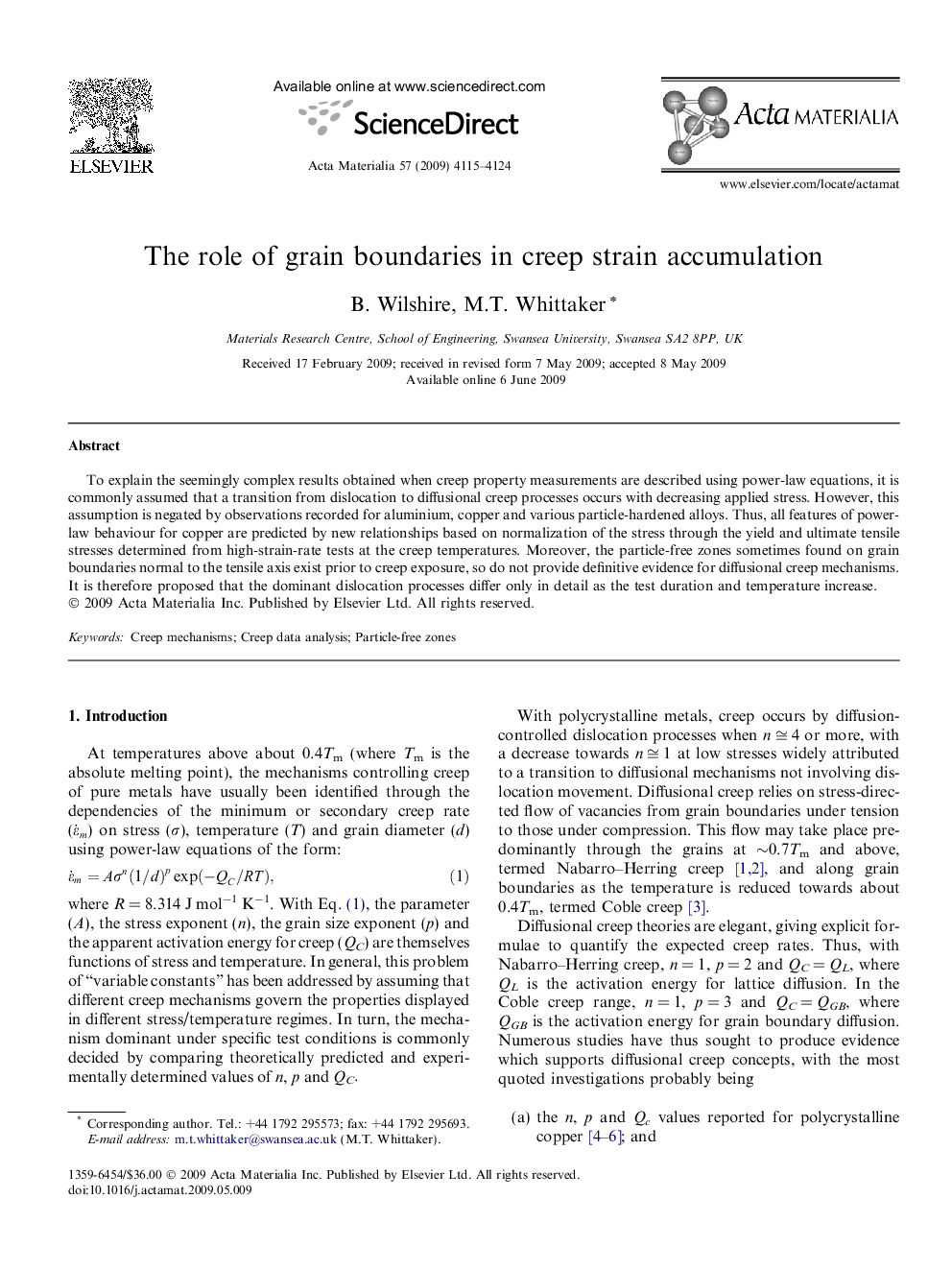| Article ID | Journal | Published Year | Pages | File Type |
|---|---|---|---|---|
| 1448055 | Acta Materialia | 2009 | 10 Pages |
To explain the seemingly complex results obtained when creep property measurements are described using power-law equations, it is commonly assumed that a transition from dislocation to diffusional creep processes occurs with decreasing applied stress. However, this assumption is negated by observations recorded for aluminium, copper and various particle-hardened alloys. Thus, all features of power-law behaviour for copper are predicted by new relationships based on normalization of the stress through the yield and ultimate tensile stresses determined from high-strain-rate tests at the creep temperatures. Moreover, the particle-free zones sometimes found on grain boundaries normal to the tensile axis exist prior to creep exposure, so do not provide definitive evidence for diffusional creep mechanisms. It is therefore proposed that the dominant dislocation processes differ only in detail as the test duration and temperature increase.
